 10-04-2023, 02:05 AM
10-04-2023, 02:05 AM
|
#11 (permalink)
|
|
Master EcoModder
Join Date: Aug 2012
Location: northwest of normal
Posts: 29,289
Thanks: 8,329
Thanked 9,089 Times in 7,508 Posts
|
From 2014:
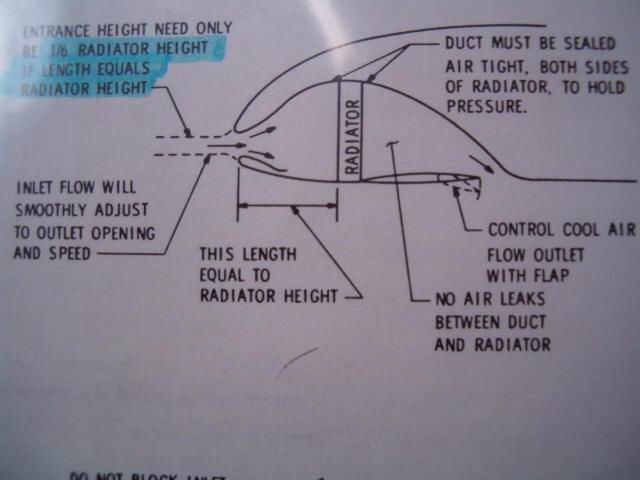
When I wrote that, it was because -- beyond the green Colani -- I'd just seen this: 
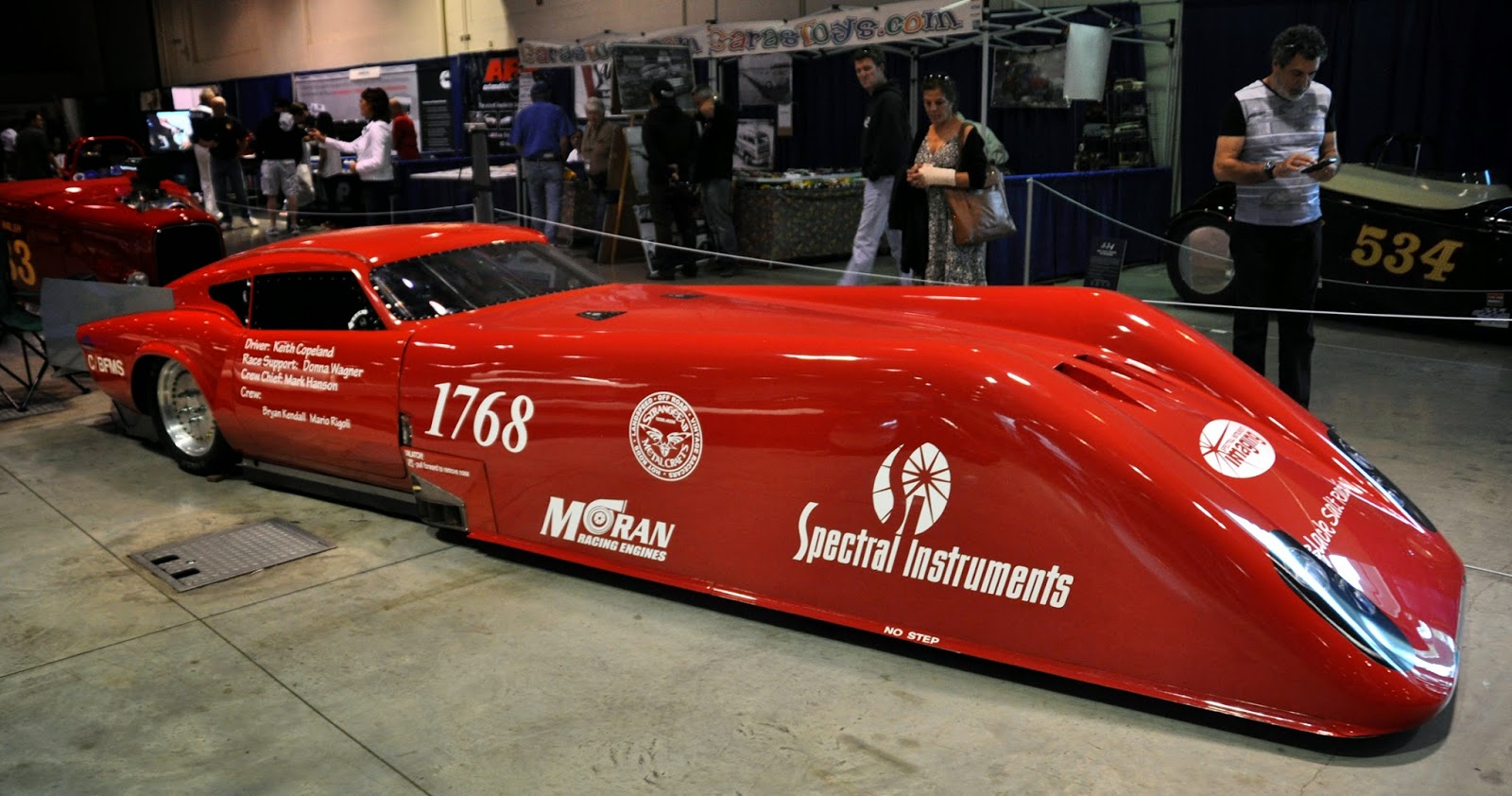 2.bp.blogspot.com/-YT-0gLHRQnE/Uu3GnlfxJkI/AAAAAAAC0q4/fmze1vcXBwY/s1600/DSC_0505.JPG
2.bp.blogspot.com/-YT-0gLHRQnE/Uu3GnlfxJkI/AAAAAAAC0q4/fmze1vcXBwY/s1600/DSC_0505.JPG
__________________
.
.Without freedom of speech we wouldn't know who all the idiots are. -- anonymous poster
___________________
.
.Impossible is just something we haven't done yet. -- Langley Outdoors Academy
|
|
|

|
|
The Following User Says Thank You to freebeard For This Useful Post:
|
|
 Today Today
|
|
|
|
 Other popular topics in this forum...
Other popular topics in this forum...
|
|
|
|
 10-04-2023, 10:06 AM
10-04-2023, 10:06 AM
|
#12 (permalink)
|
|
Master EcoModder
Join Date: Nov 2020
Location: The Pas, Manitoba
Posts: 319
Thanks: 427
Thanked 147 Times in 113 Posts
|
Oh wow! I understand what you mean now by boat-tailing. Reminds me of the “Bonneville Blowfish”.
I wonder how they exhaust the high pressure air in the front wheel wells. Ditto for the radiator flow.
That radiator ducting you posted is neat, but I bet it would require some serious length. Many Motorsport radiator ducts use a 7 degree expansion angle as a rule of thumb, but this has radiused curves over straight lines. Hmm, I’m still inclined to believe that dumping air out the bottom like that would make lift.
Anyways, test test test. I may make a magnehekic gauge.
|
|
|

|
|
The Following User Says Thank You to JacobLeSann For This Useful Post:
|
|
 10-05-2023, 05:01 AM
10-05-2023, 05:01 AM
|
#13 (permalink)
|
|
EcoModding Noob
Join Date: Oct 2022
Location: Canada
Posts: 53
Thanks: 31
Thanked 18 Times in 12 Posts
|
How have I not seen this thread yet? Awesome!
__________________

|
|
|

|
|
The Following User Says Thank You to Christian For This Useful Post:
|
|
 10-05-2023, 07:32 PM
10-05-2023, 07:32 PM
|
#14 (permalink)
|
|
Master EcoModder
Join Date: Nov 2020
Location: The Pas, Manitoba
Posts: 319
Thanks: 427
Thanked 147 Times in 113 Posts
|
Thanks! Work in progress, but still driven everyday. This R18 is an underrated little Honda engine.
——————————————————-
Been raining hard enough to feel European around here lately, and I’ve been watching carefully at how rain is flowing over the car. I’m not quite sure what exactly this is indicating but it’s of interest.

Here’s a driver’s view at 90 km/h. I used a filter to make the water more visible. The water was still and didn’t move 3-5” behind the wipers, in an asymmetrical pattern.

Rear windshield at 90 km/h. No flow. Stray rain drops that landed there would stay there and not move.

Front windshield after parking. A little washed out but the flow pattern was visible.

Rear view of the roof. A clean flow pattern was visible but seemed to break off at the edge between the rear glass and the roof.

Rear end. You can see some streams of water wrapping over the C-pillars. There were no flow lines on the rear glass, and the rear wing had nothing of note.
My theory is that the flow of rain water around the car is a side effect of high pressure zones on the car. The flow seems most intense at the top of the roof, and at the front of the car. Air spiraling out the front wheel casts a big swath of pure water down the sides. There is nothing at the rear. But that’s just my idea.
———————————————
I think there is something tricky going on with the boundary layer at the rear of the car. This may match up with photos of tuft lines I have posted in the original thread. If I make a magnehelic gauge and measure pressure zones of the car, maybe that will get me closer to understanding.
It’s very wet out, but if/once it dries I will try some more tuft testing. |
|
|

|
 10-09-2023, 10:13 AM
10-09-2023, 10:13 AM
|
#15 (permalink)
|
|
Master EcoModder
Join Date: Jan 2008
Location: Sanger,Texas,U.S.A.
Posts: 16,473
Thanks: 24,500
Thanked 7,436 Times in 4,817 Posts
|
'out the bottom'
Quote:
Originally Posted by JacobLeSann

Oh wow! I understand what you mean now by boat-tailing. Reminds me of the “Bonneville Blowfish”.
I wonder how they exhaust the high pressure air in the front wheel wells. Ditto for the radiator flow.
That radiator ducting you posted is neat, but I bet it would require some serious length. Many Motorsport radiator ducts use a 7 degree expansion angle as a rule of thumb, but this has radiused curves over straight lines. Hmm, I’m still inclined to believe that dumping air out the bottom like that would make lift.
Anyways, test test test. I may make a magnehekic gauge.
|
With a properly shaped underbody, it can assist with a super-velocity which can actually cancel lift for the vehicle.
__________________
Photobucket album: http://s1271.photobucket.com/albums/jj622/aerohead2/
|
|
|

|
|
The Following User Says Thank You to aerohead For This Useful Post:
|
|
 10-17-2023, 03:43 PM
10-17-2023, 03:43 PM
|
#16 (permalink)
|
|
Master EcoModder
Join Date: Nov 2020
Location: The Pas, Manitoba
Posts: 319
Thanks: 427
Thanked 147 Times in 113 Posts
|
Super-velocity??
Would love to see pics.
Going to stitch up my old cracked bumper today and try some ducting out. I think NASCAR has some great duct designs for a front engine car. There seems to be complications in getting air out of the front wheel wells because of the engine placement and design…Specific to this car of course.
|
|
|

|
 10-17-2023, 04:20 PM
10-17-2023, 04:20 PM
|
#17 (permalink)
|
|
Master EcoModder
Join Date: Aug 2012
Location: northwest of normal
Posts: 29,289
Thanks: 8,329
Thanked 9,089 Times in 7,508 Posts
|
Pictures? You want Pictures?
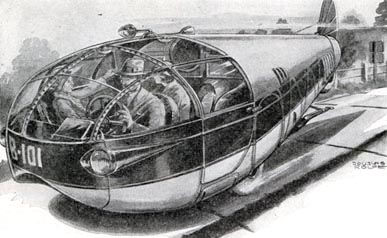
Buckminster Fuller called it an 'air keel'.
Aerocivic employed double-wall side skirts.
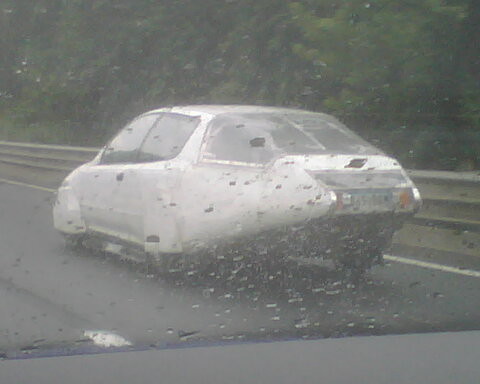 https://ecomodder.com/forum/showthre...html#post78309
https://ecomodder.com/forum/showthre...html#post78309
Practically speaking, you start with a notched air dam.
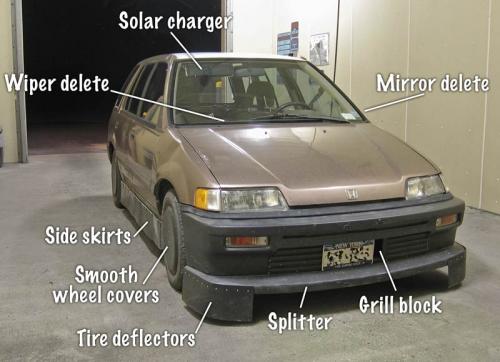
[I keep forgetting whose car this is]
__________________
.
.Without freedom of speech we wouldn't know who all the idiots are. -- anonymous poster
___________________
.
.Impossible is just something we haven't done yet. -- Langley Outdoors Academy
|
|
|

|
 10-18-2023, 12:55 AM
10-18-2023, 12:55 AM
|
#18 (permalink)
|
|
Master EcoModder
Join Date: Nov 2020
Location: The Pas, Manitoba
Posts: 319
Thanks: 427
Thanked 147 Times in 113 Posts
|
I’m not following. You mean having a smooth underbody, with sides that drop down to create a central channel through the underbody?
How does that equate to a “super-velocity”?
|
|
|

|
 10-18-2023, 03:00 AM
10-18-2023, 03:00 AM
|
#19 (permalink)
|
|
Master EcoModder
Join Date: Aug 2012
Location: northwest of normal
Posts: 29,289
Thanks: 8,329
Thanked 9,089 Times in 7,508 Posts
|
His term, not mine. Maybe he will check back in in a day or two.
__________________
.
.Without freedom of speech we wouldn't know who all the idiots are. -- anonymous poster
___________________
.
.Impossible is just something we haven't done yet. -- Langley Outdoors Academy
|
|
|

|
 10-19-2023, 11:14 AM
10-19-2023, 11:14 AM
|
#20 (permalink)
|
|
Master EcoModder
Join Date: Jan 2008
Location: Sanger,Texas,U.S.A.
Posts: 16,473
Thanks: 24,500
Thanked 7,436 Times in 4,817 Posts
|
'water whispering'
Quote:
Originally Posted by JacobLeSann

Thanks! Work in progress, but still driven everyday. This R18 is an underrated little Honda engine.
——————————————————-
Been raining hard enough to feel European around here lately, and I’ve been watching carefully at how rain is flowing over the car. I’m not quite sure what exactly this is indicating but it’s of interest.

Here’s a driver’s view at 90 km/h. I used a filter to make the water more visible. The water was still and didn’t move 3-5” behind the wipers, in an asymmetrical pattern.

Rear windshield at 90 km/h. No flow. Stray rain drops that landed there would stay there and not move.

Front windshield after parking. A little washed out but the flow pattern was visible.

Rear view of the roof. A clean flow pattern was visible but seemed to break off at the edge between the rear glass and the roof.

Rear end. You can see some streams of water wrapping over the C-pillars. There were no flow lines on the rear glass, and the rear wing had nothing of note.
My theory is that the flow of rain water around the car is a side effect of high pressure zones on the car. The flow seems most intense at the top of the roof, and at the front of the car. Air spiraling out the front wheel casts a big swath of pure water down the sides. There is nothing at the rear. But that’s just my idea.
———————————————
I think there is something tricky going on with the boundary layer at the rear of the car. This may match up with photos of tuft lines I have posted in the original thread. If I make a magnehelic gauge and measure pressure zones of the car, maybe that will get me closer to understanding.
It’s very wet out, but if/once it dries I will try some more tuft testing. |
1) that's likely a 3"- 5" dead zone in the lee of the wipers, even though they're 'aero' blades. The wiper blades have a Cd of around 1.20, and kicking the flow up just as the flow deflectors do around tires.
2) the backlight is much steeper than the 2011 Audi A7, which had total flow separation at exactly the same place as the CIVIC. The spoiler has likely captured the hoped-for stagnation bubble, but the local streamline is in no position to feed any momentum into this region, as you've lost the boundary layer all the way to the tearing edge / reversal point of the spoiler.
3) the flow rounding the C-pillars triggered the vortice formation in conjunction with low-energy turbulence over the glass.
4) if the length of the spoiler is at the optimum, it's going to be as good as it's going to get for the single mod.
__________________
Photobucket album: http://s1271.photobucket.com/albums/jj622/aerohead2/
|
|
|

|
|
The Following User Says Thank You to aerohead For This Useful Post:
|
|
|